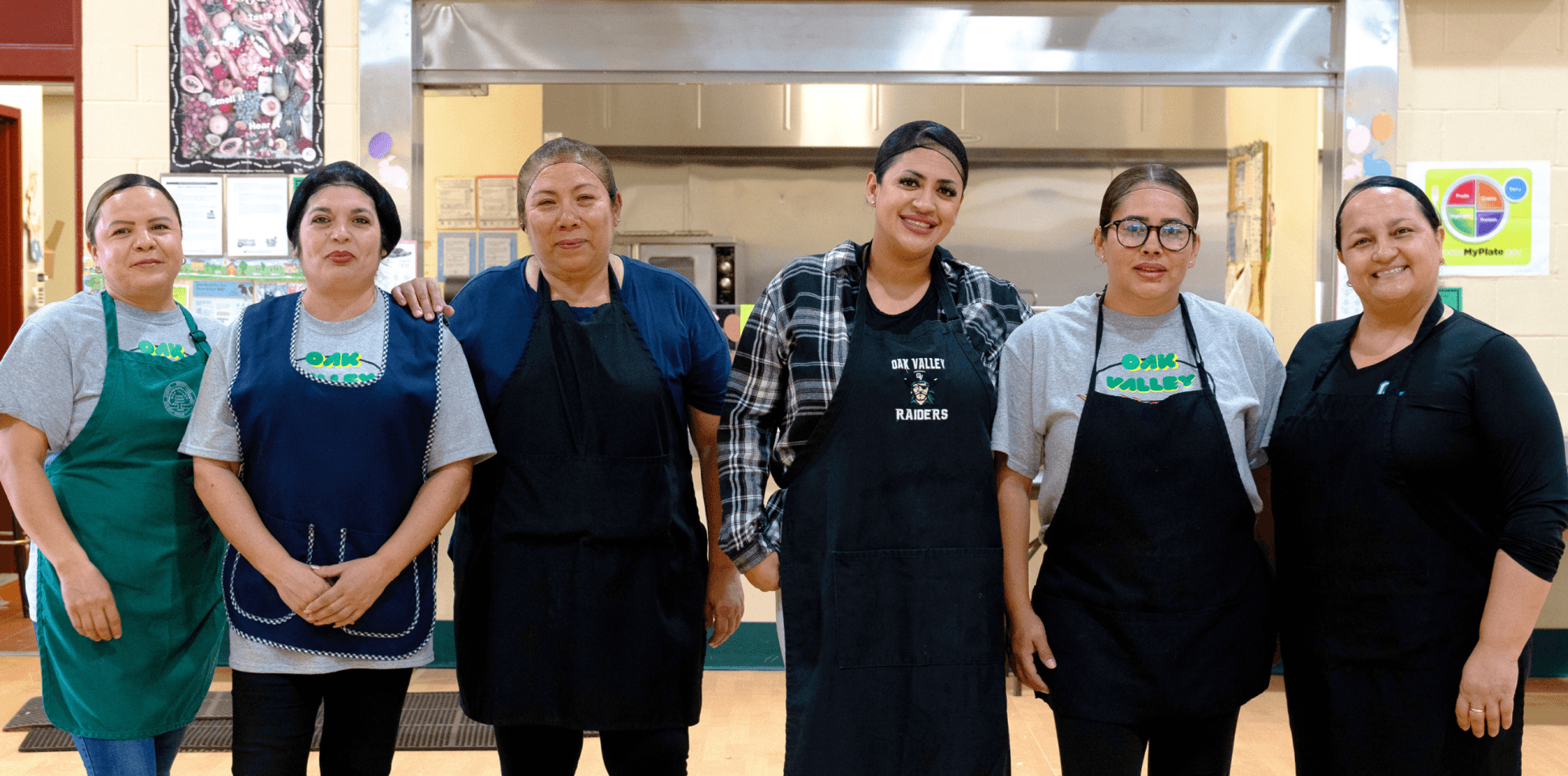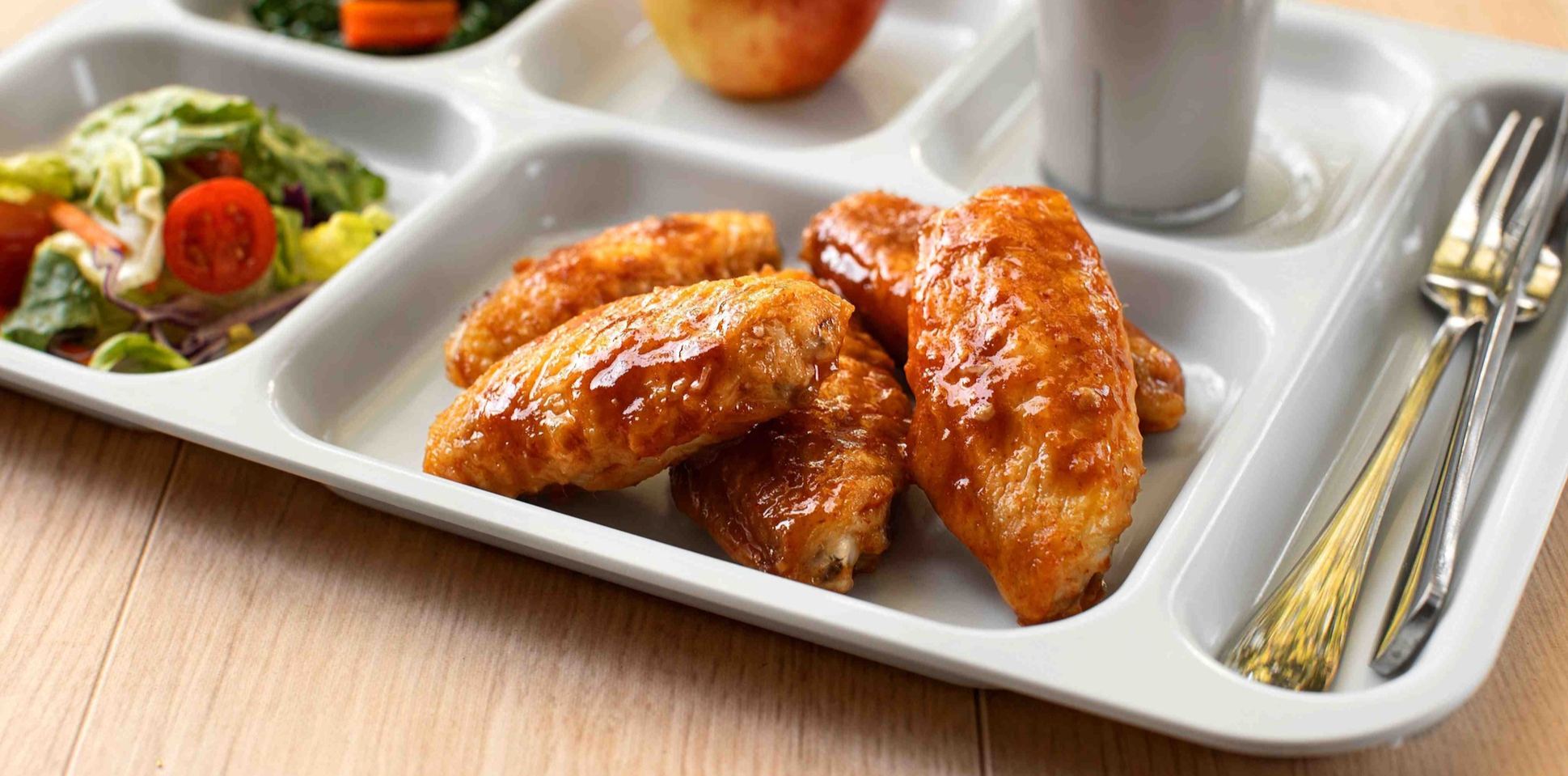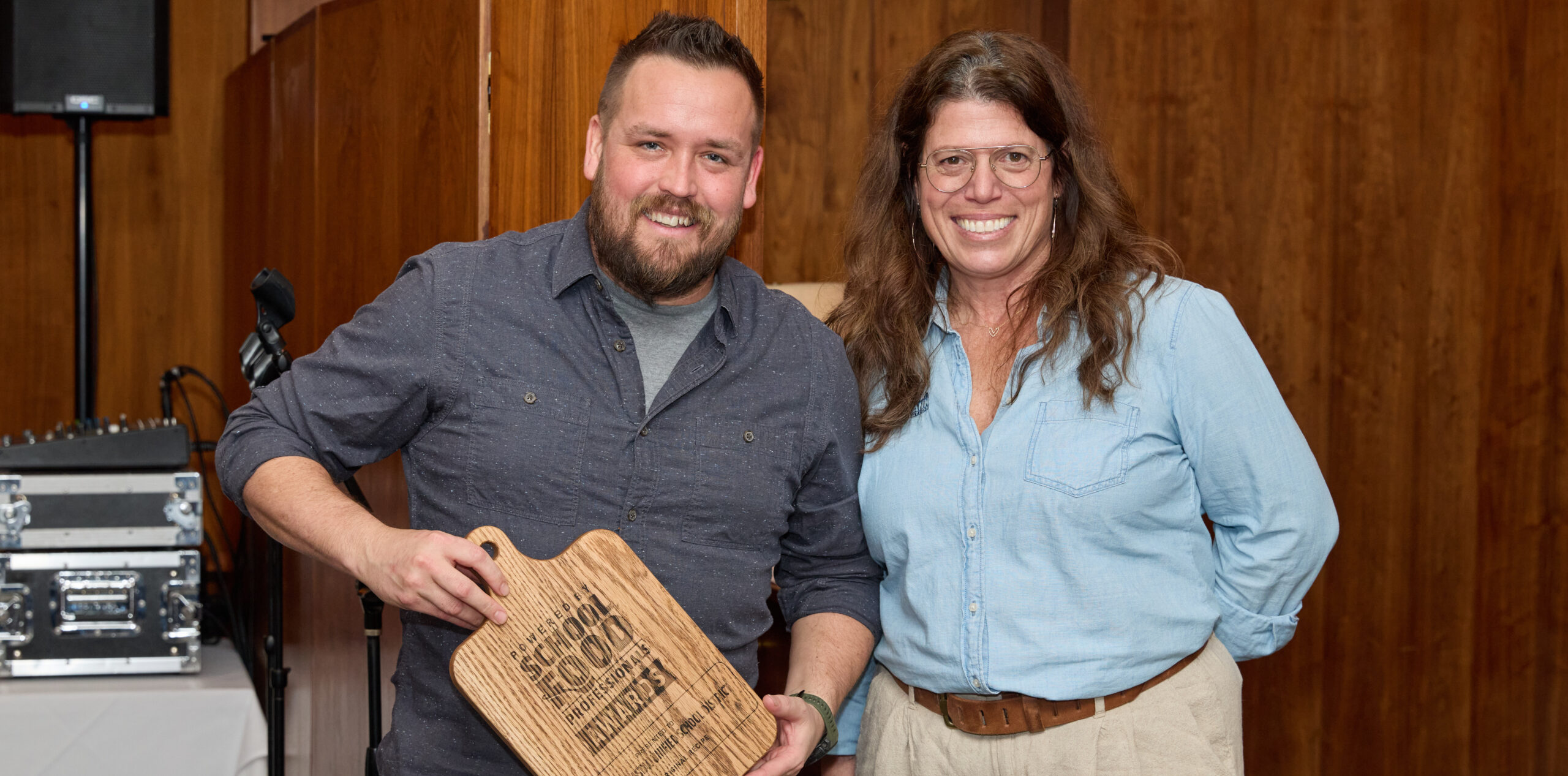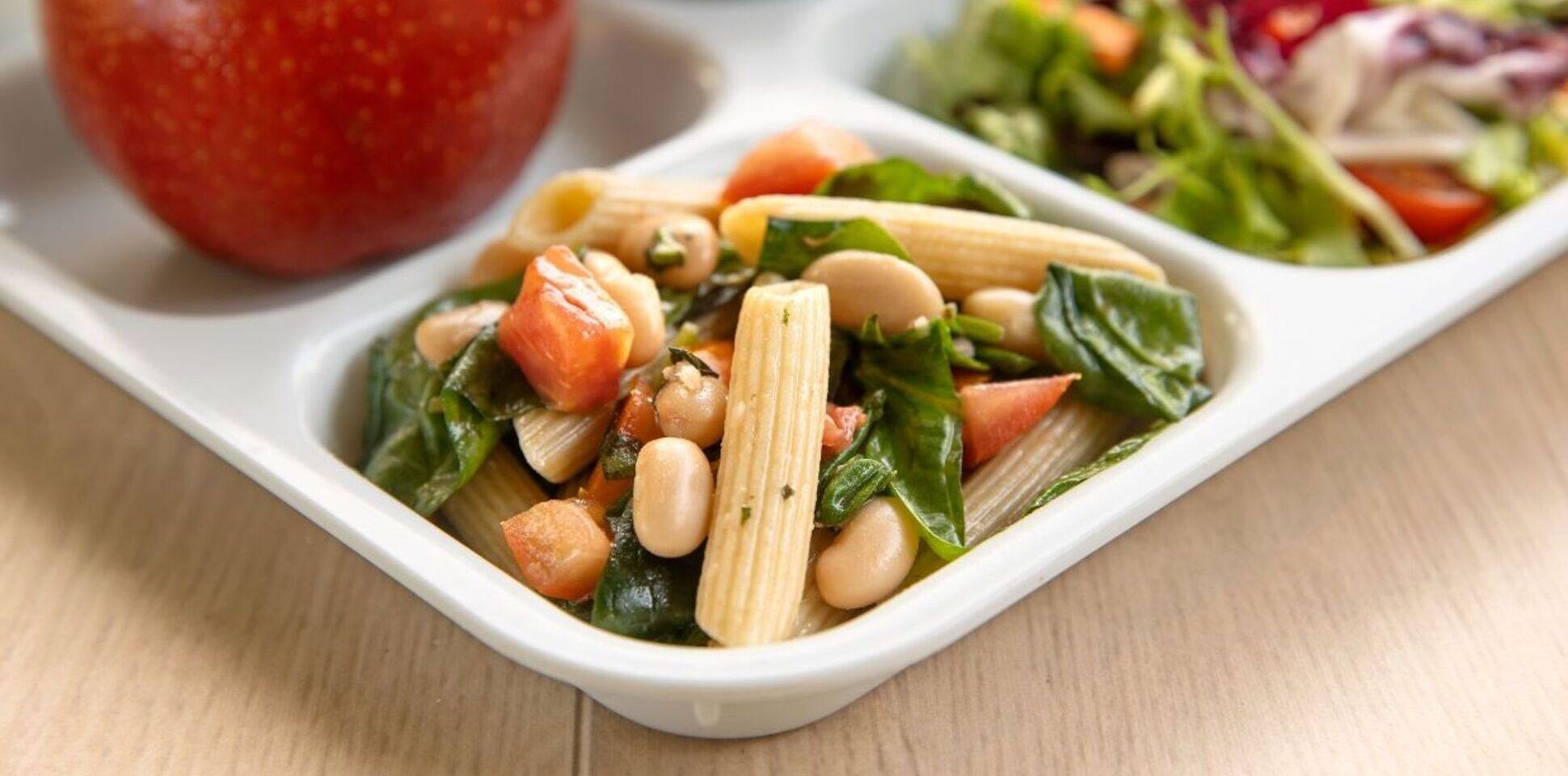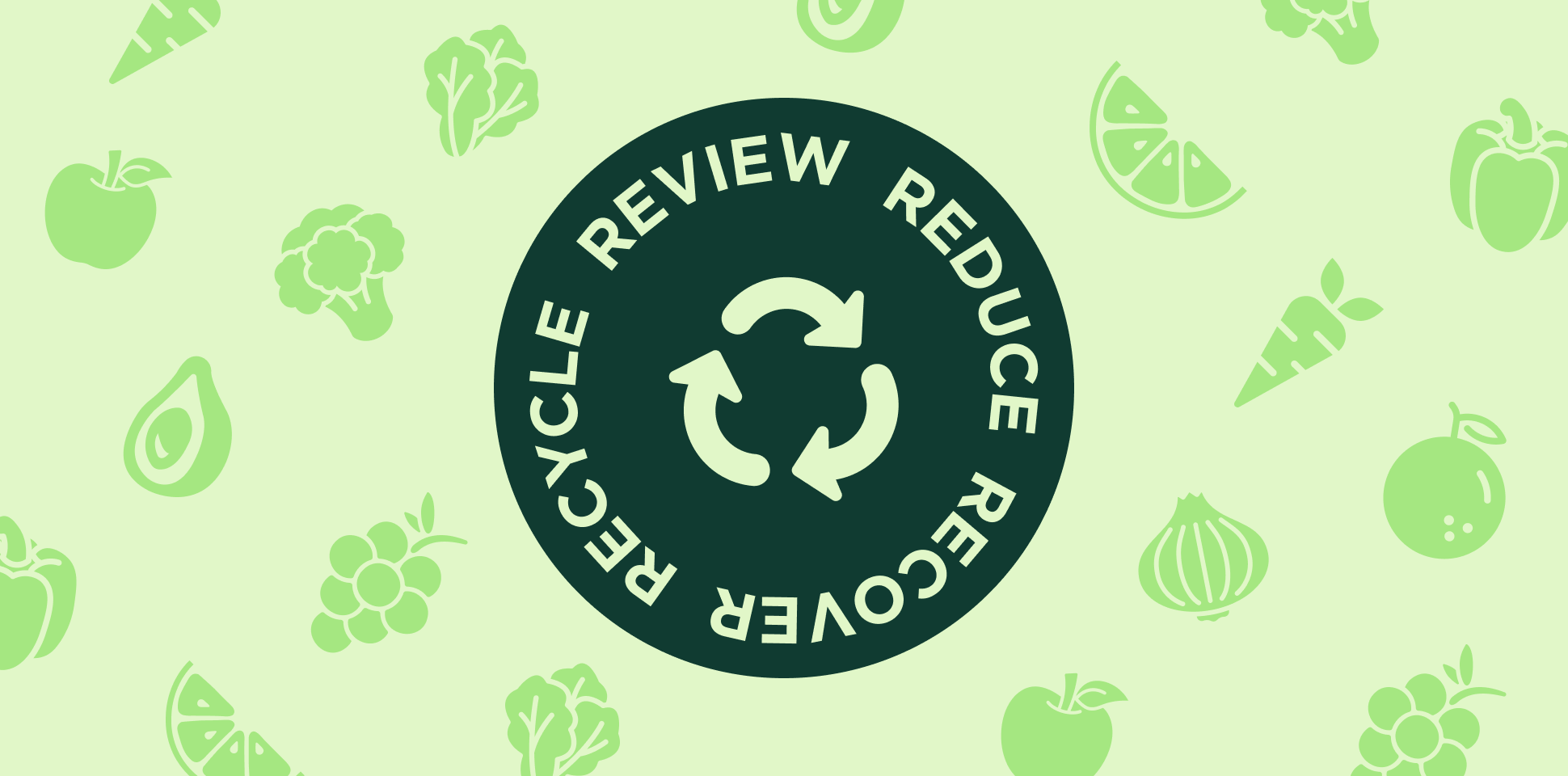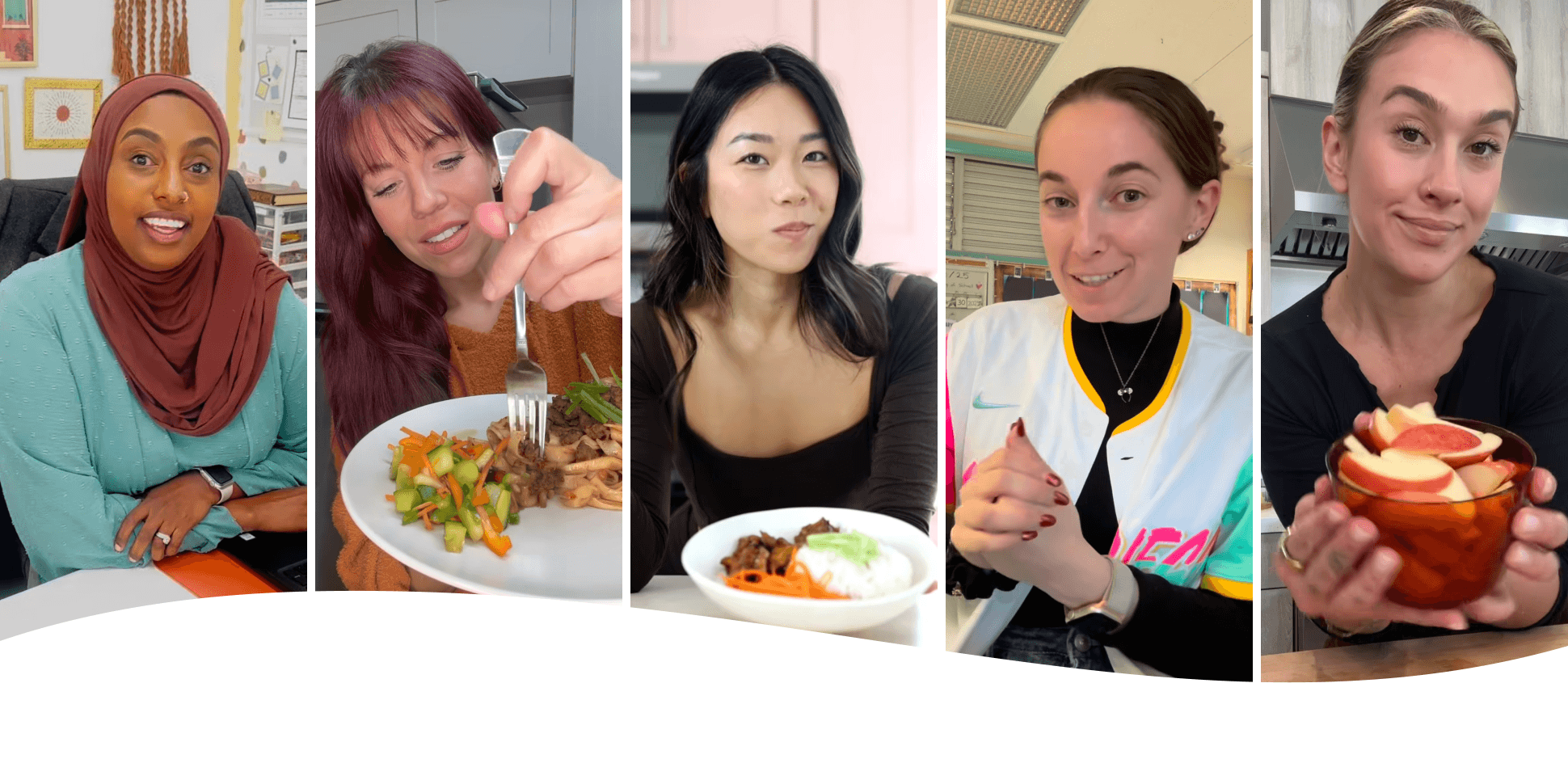School Food Professionals are transforming school meal programs across the country, resulting in better meals for students. Yet despite their many valuable contributions, School Food Professionals don’t get the recognition they deserve.
School food teams are moving away from serving prepackaged, ultra-processed foods to cooked-from-scratch meals that incorporate fresher ingredients and new techniques. But that’s just the beginning. School Food Professionals improve the lives of our children in so many ways, from cooking delicious and nutritious meals that help students succeed, to educating kids about healthy eating habits, introducing them to new ingredients and dishes, celebrating their backgrounds and cultures, and serving as a welcoming, friendly voice during mealtimes.
The general public often sees school food jobs as requiring low levels of skill and expertise. On the contrary, the opposite is true, but the public’s perception makes it harder for School Food Professionals to recruit advocates and allies who can support them in improving our kids’ school meals, pushing for fresher and more local ingredients, and building support for better training and wages. Through a grant provided by the California Community Colleges Chancellor’s Office and in partnership with the State of California, the Chef Ann Foundation decided to take action, launching Powered by School Food Professionals — a California-based campaign designed to change how people across the state think and feel about School Food Professionals.
The Problems: Perception and Understanding
In order to correct these misperceptions, the first step was to get a better sense of what they were and what causes them. To achieve that, we talked to California parents across the state. Using surveys and focus groups, we found that they generally saw School Food Professionals as hardworking people who make a positive difference, but they also related school food work to low skill, social status, and value.
When examining where these views come from, we found that many people are simply unaware of what School Food Professionals do. That lack of knowledge goes on to reinforce stereotypes and inaccurate perceptions of the role, and it leaves School Food Professionals feeling underappreciated in their work.
Changing the Narratives
To change these narratives and help Californians understand the amazing contributions of School Food Professionals, we used a full-court-press approach – educating people about who they are and what they do, uplifting the stories of real School Food Professionals working in the field, and drawing attention to their impact and efforts to transform school food. This included a wide spectrum of approaches, such as using first-person storytelling to introduce audiences to School Food Professionals and showcase their many skills, educating audiences on how they support students’ health, wellbeing, and academic performance, and celebrating their contributions through a statewide awards ceremony.
Getting Results
The “Powered By School Food Professionals” campaign was successful in reaching California K-12 parents, School Food Professionals, and the general public. Using surveys and 1-on-1 and group conversations, we measured the campaign’s success at reaching, resonating, and changing the perceptions of these audiences.
Between April 2023-April 2024, the campaign reached more than 24 million Californians. The advertisements, translated into seven languages, had 200 million total impressions, surpassing the goal for the entire campaign in less than two months.
In talking to K-12 parents, we found that more now see the skills School Food Professionals bring to their work. After the campaign launched, the percentage of parents who said they believed that School Food Professionals are professional and skilled, influence menus, and have culinary training and nutritional expertise, increased by 10 percentage points to 59%. Statewide, this represents a positive change in perceptions for up to 1.1 million people. Parents also strongly recognized the positive impact that School Food Professionals have on students’ moods, health, and academic performance.
Changing the Narrative in Your Community
The important contributions of School Food Professionals aren’t limited to California. In all 50 states, skilled, committed, and innovative professionals are working to reimagine what school meals can be.
Our hope is that the “Powered By School Food Professionals” campaign inspires others to improve the way that people in their communities think and talk about the school food profession. Improving the awareness and appreciation of School Food Professionals opens the door to higher wages, more training, and increased prominence within their districts and communities, which all lead to better meals and outcomes for students.
But you don’t need to wait for a campaign. Changing perceptions begins with conversations between neighbors, at PTA meetings, with your school district administration and your elected representatives.
This momentum builds over time. With every conversation you have, you help more people understand the value and commitment to advocating for School Food Professionals. Everyone has a stake in school food, and everyone has a reason to take action. When kids are healthy and succeed in school, we all benefit. Students feel better and perform better academically, the local economy prospers, communities grow stronger, and members of the school food profession are more fulfilled in their jobs.
Together, we can all achieve a better state for school food — starting with valued School Food Professionals.
To learn more, read our white paper, entitled “Elevating the Perceptions of School Food Professionals in California: A Case Study.”
